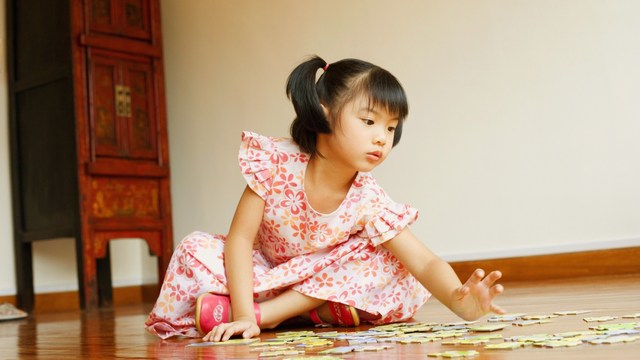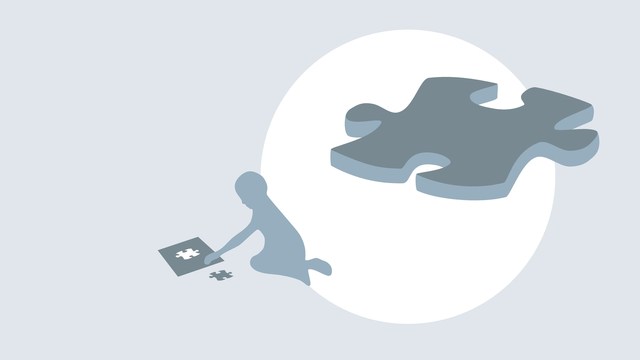 PS Productions/Photospin
PS Productions/Photospin
Therapy is Best if Started Early
According to the Centers for Disease Control (CDC), 1 in 88 children has been identified with an autism spectrum disorder, and more and more children are being diagnosed at earlier ages, on average at about 4 years of age. (1)
Addressing behavioral and developmental issues associated with autism early can make a huge impact on how children with ASDs can live more independently. It is important to talk to your child’s doctor as soon as possible if you think your child has an ASD or other developmental problem so that intervention can begin early. (2)
Your state has information on early intervention services, including evaluation for an ASD.
While there is no cure for autism, and dietary changes and medication are not always effective for every child, behavioral method training such as ABA or IBI therapy can be of great benefit for children with autism.
ABA: Applied Behavioral Analysis
ABA, or Applied Behavioral Analysis, uses basic scientific principles of behavior (behaviorism) to encourage positive behavior and discourage negative behavior. (2)
Strategies include positive reinforcement and other methods to address and curb challenging behavior, encourage a child’s social development and participation, and correct and/or establish daily living skills such as personal hygiene and time management.
ABA methods can be:
• Used at home
• Used at school
• Used in the community
• Incorporated into regular classroom routines
• Implemented by parents, grandparents, caregivers, teachers and support workers
• The basis for on-going skill development (4)
ABA therapy may include:
- Discrete Trial Training (DTT) where “lessons are broken down into their simplest parts and positive reinforcement is used to reward correct answers and behaviors. Incorrect answers are ignored.” (2)
- Early Intensive Behavioral Intervention (EIBI) which is similar to IBI defined below, however, EIBI is for children younger than five, and often younger than three. (2)
- Pivotal Response Training (PRT) to increase a child’s motivation to learn, monitor his own behavior, and initiate communication with others. (2)
- Verbal Behavior Intervention (VBI) which focuses on teaching verbal skills. (2)
- Developmental, Individual Differences, Relationship-Based Approach (DIR; also called “Floortime”) which focuses on emotions and relationship development, and is also used to help a child deal with sights, sounds, and smells. (2)
- Treatment and Education of Autistic and Rrlated Communication-handicapped Children (TEACCH) which uses visual cues, such as picture cards, to teach skills like getting dressed in several small steps. (2)
Other therapies that can be part of the treatment plan:
- Occupational Therapy which teaches skills to help a child learn to live as independently as possible such as dressing, eating, bathing, and interpersonal communication. (2)
- Sensory Integration Therapy to help a child deal with sights, sounds, and smells, and with being touched. (2)
- Speech Therapy to improve a child’s communication skills. This can include actual verbal communication skills or the use of gestures (sign language) or picture boards. (2)
- Picture Exchange Communication System (PECS) which teaches communication skills through the use of picture symbols to ask and answer questions and have a conversation. (2)
IBI: Intensive Behavioral Intervention
Intensive Behavioral Intervention (IBI) is “intensive and comprehensive delivery of behavioural treatment for young children with autism [and] is guided by the clinical application of the learning principles and teaching strategies of ABA ...” (3)
IBI is used for children who are at the moderate to severe end of the autism spectrum. (3) Children with Aspergers usually do not qualify for IBI since, by classification, they’re higher performing.
In contrast to ABA, IBI:
• Uses a specific intensive format for each child
• Is usually delivered at home or in a private space
• Primarily is provided in a one-to-one or small group setting (low ratio) for up to 40 hours per week
• Is delivered by a trained behavior therapist, supervised by a psychologist
• Includes "learning to learn" behaviors through imitation, co-operation and attention
• Is designed to prepare students for school
Sources:
1. Autism Spectrum Disorders (ASDs). Centers for Disease Control and Prevention. Web. April 15, 2013.
http://www.cdc.gov/ncbddd/autism/data.html
2. Autism Spectrum Disorders Treatment. Centers for Disease Control and Prevention. Web. Apr 15, 2013.
http://www.cdc.gov/ncbddd/autism/treatment.html
3. Autism Services. KidsAbility Centre for Child Development. Web. April 15, 2013.
http://www.kidsability.ca/en/AutismServices
4. What is IBI and is it the same as ABA? Geneva Centre for Autism. Web. April 15, 2013.
http://www.autism.net/faqs/595-what-is-ibi-and-is-it-the-same-as-aba.html
5. Applied Behavior Analysis. AutismUnited.org. Web. April 15, 2013.
http://www.autismunited.org/blog/applied-behavior-analysis-80435.html
Reviewed April 15, 2013
by Michele Blacksberg RN
Edited by Jody Smith





Add a CommentComments
There are no comments yet. Be the first one and get the conversation started!